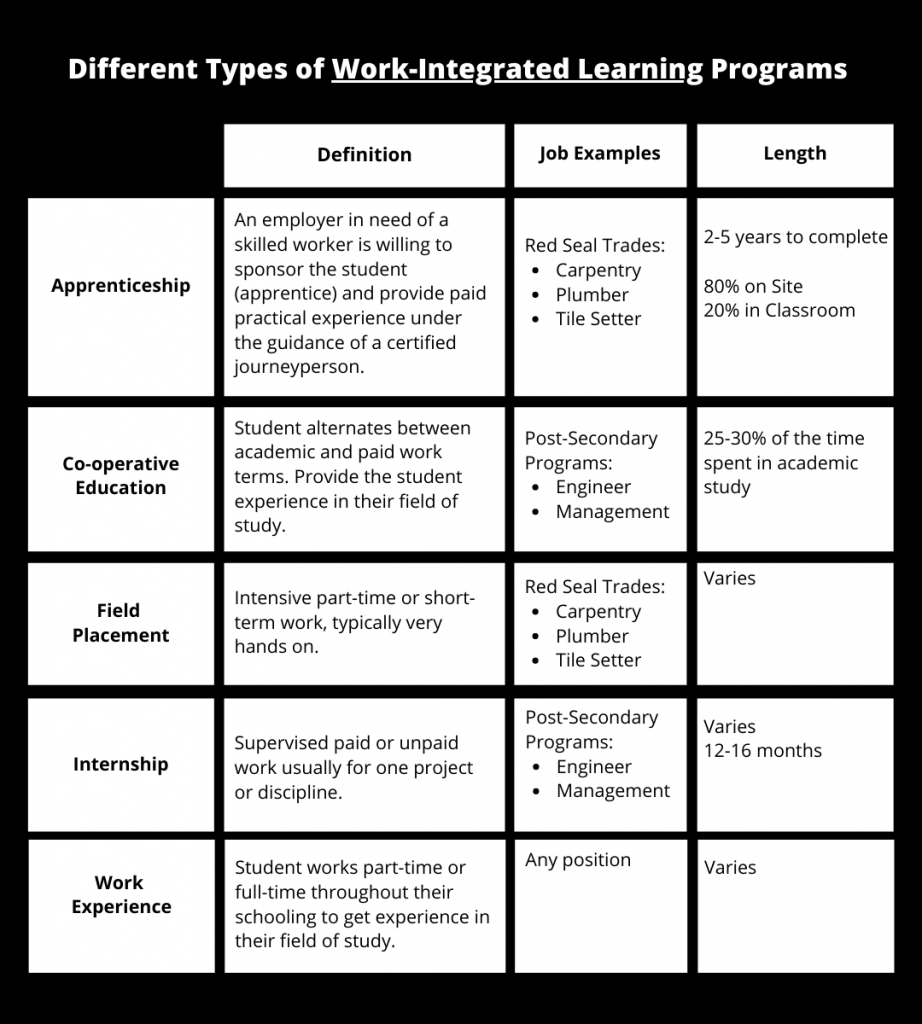The Pros and Cons of Hiring Students in Construction

One of the biggest issues in residential construction is the lack of people available to work. With a lack of carpenters, framers, plumbers, etc., builders in the Okanagan are struggling to take on more clients and homes in fear of not having enough staff to complete the job within a reasonable time frame.
On the bright side, it has never been a better time for students considering a career in trades. Federal and Provincial Governments are trying to increase the number of people choosing a career in the trades. Grants and financial aid have been given to students entering trade school and businesses employing students to increase people’s interest in the industry. The desired result is an increase in students considering the trades as a first or second career path.
As we get ready for an influx of local trades talent in the years ahead, companies scaling up their business should consider hiring students straight from trades school. However, it isn’t always that simple. These are always tradeoffs that need to be considered.
With that said, here are some Pros and Cons of Hiring Students in Construction:
Pro #1: Students are Easy to Train
A majority of CHBA-CO members have said that they enjoy hiring students because they tend to learn things quicker. Students typically enter trades school with a drive that motivates them to finish jobs faster to make good impressions and get ahead of their class.
Builders in the Okanagan have also enjoyed hiring students because they have no experience with other contractors. More specifically, because they have not been on a job site before, most likely they have not developed any bad habits regarding equipment safety or work ethic.
Kim Larson, the Director of All Elements Design. Manage. Build. And CHBA-CO member mentioned that sometimes, the less experienced the better. “When working on high performance and net-zero homes, we want to ensure they are being taught the right way. We can avoid running into problems if we teach them from the start”.
Pro #2: Students are Cost-Effective
As most students have zero to very little experience in the trades, it is fair to offer them lower wages compared to experienced tradespeople. Moreover, there are many different grants and programs that can help cover student wages or get students additional training at a lower cost. These are a few available in British Columbia, Canada:
-
- Employment and Social Development Canada
- WorkBC Apprentice Services click here for the full list.
Tip: Grant and funding application dates open and close on different dates. To stay on top of deadlines, add them to your calendar or set up reminders so you don’t forget!
Pro #3: Fresh Eyes
Although students have limited experience in the industry, they’re entering the workforce with a new perspective. Thus, students may be able to notice and question things you had never thought of.
Also, depending on the student’s course curriculum, they could be educated on new technologies and techniques. For example, although students are not being taught BC Step Code, the upcoming graduating classes know of the importance of airtightness in new homes, or home orientation to ensure maximum energy efficiency. In other words, students can help you stay up to date with best practices!
Pro #4: Lower Employee Turnover
If students had a good experience working part-time or casually with a builder or contractor while they were in school, the odds of them asking for a permanent position once they graduate are very high! Students will most likely ask to return to the company if they enjoyed the job, their co-workers or crew, and if they felt they were being well paid. In the long run, this can make your life easier if you don’t have to screen applicants because they’ve already worked with you!
Pro #5: Increased Public Perception
It is very attractive to job applicants to see companies not only hiring students but teaching them the tricks of the trade along the way. Ultimately, hiring students can attract better talent to join your team in the future.
The Okanagan College Co-op Coordinator explained that “by coaching and training students, employers are leading by example in trying to get more people interested in pursuing a career in the trades.”
Pro #6: Hiring Assistance Available
Depending on the school and program, employers can get help from colleges throughout the hiring process; some schools will conduct routine checkups and arrange interviews. These steps are often done for free or at a lower cost by the school which can greatly simplify HR processes.
If you’re looking to expand your team, upload your jobs here.
Con #1: Quick to Leave
Provided that students are new to the industry and have no attachment to a company, some can be quick to leave. If the student is offered more money elsewhere or if they simply don’t like their manager or company culture, they will quickly hand in a resignation letter.
Con #2: Training is an investment (that pays in the long run)
As students may have very little or no experience, they need lots of training and guidance at the start. To successfully onboard a student, you may have to spend many weeks and months training them. One thing to consider is of course you’re choosing to hire and pay someone to take stuff of your plate, but in the beginning it will add more work. Be sure to account for investing your time into your new hires to ensure they don’t fall prey to Con #1.
“A way to mitigate students leaving while being trained is to put them through a 4-year apprentice program”, says Kim Larson from All Elements Design. Manage. Build.
Con #3: Not Permanent 
Although students may return to work with you after graduation, during their studies they typically don’t stay for a long time. Students may have to return to school full time, or in some cases may need to relocate to finish their schooling elsewhere. For example, in BC, Tile Setters and Flooring Installers can complete their first year in Kelowna but have to take their second and thirds in North Okanagan.
Con #4: Unsure of the Industry
Students, typically, have just decided to pursue a career in the trades and therefore may have a low commitment to start. As they are just testing what positions and industries they would like to do for the majority of their lives. For example, a student employed at a framing company may decide they don’t want to be a framer for the rest of their lives. That student could then decide to try flooring or could go back to do something completely different like becoming an engineer.
To mitigate this, help your students or new hires understand where they fit into the larger picture and consider how you can develop them in the long-term picture of your business. A Co-op Coordinator from Okanagan College advises employers to give students a variety of roles and create networking opportunities to show them for far they could go within the company.
Different types of Work-Integrated Learning Programs
As you are hiring students, you will come across different types of work terms and programs. Use this chart to understand what program you would like to hire students from.

Where to find students ready to work?
Upload your jobs to the CHBA-CO Job Board by visiting jobs.chbaco.com.
